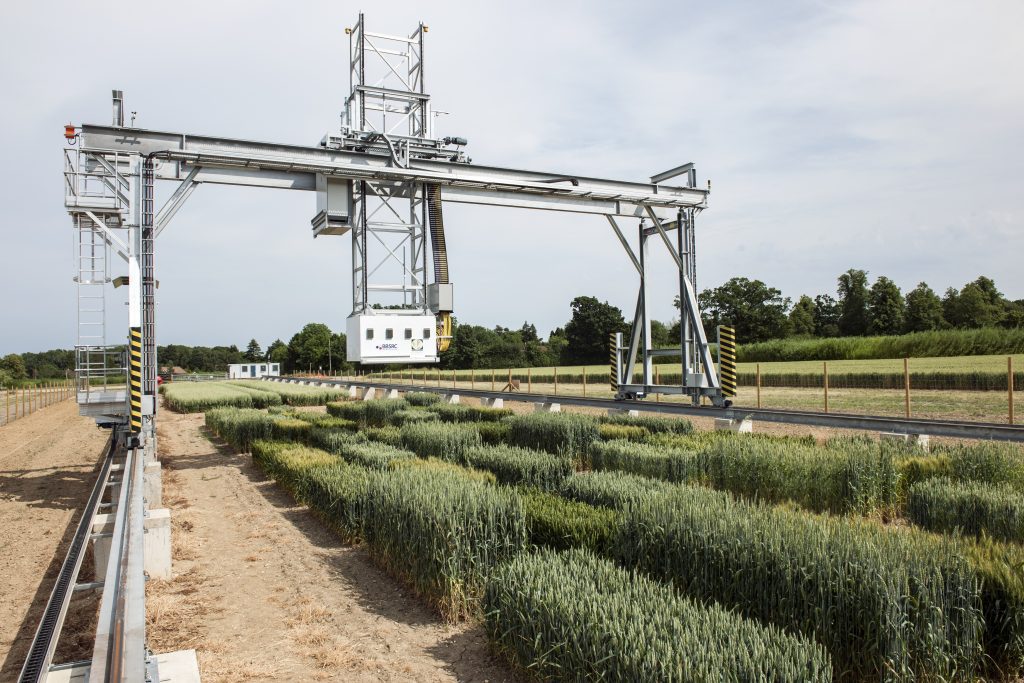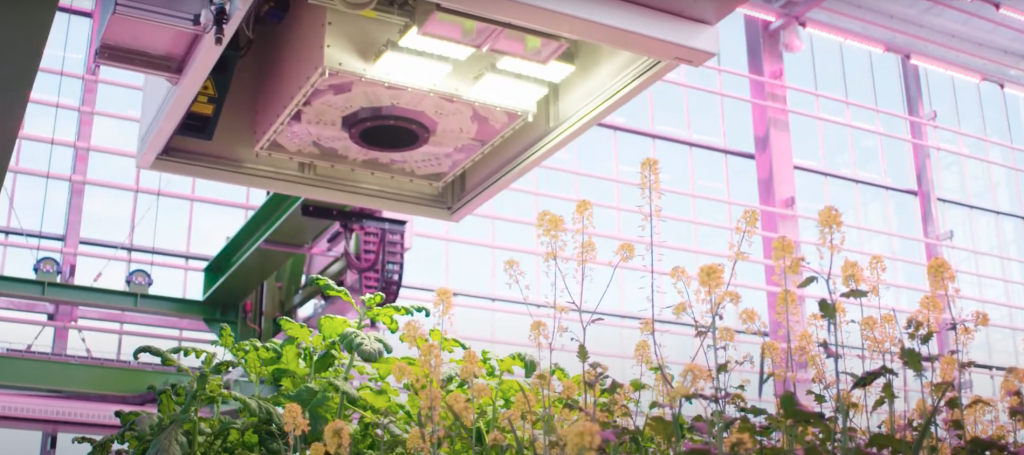Last time I explained that phenotyping is increasingly about capturing images that then allow us to extract measurements. To recap, you can measure fields of crops, individual plants in the field, or in greenhouses or other controlled environments, or even parts of a plant. Critically, success depends on the availability of appropriate technology designed to meet the needs of the different types of measurements required.
Imaging at field-scale

Field Scanalyzer at Rothamsted Research
At Rothamsted we have the Field Scanalyzer. This is an automated gantry-mounted digital phenotyping system, which, as the name suggests, is out in the field. The chief advantage is that the phenotyping is done in a real environment, although this may also present challenges.
We use it to measure how crops are growing in the field: we can quantify a range of parameters, in a completely automated fashion, critically 24/7, and without needing to go out into the field. We can program for up to a year in advance, not only what we want to measure but also when we want to take measurements.
When the required measurements have been taken, all the data can be streamed back to the lab and analysed. That is where the real work begins, because the analysis is the biggest task. That is the concept of the Field Scanalyzer.
Field scale phenotyping in a controlled environment

Plant phenotyping gantry in the Soil Health Facility at Cranfield University
Then there is the Agri-EPI equipment in CHAP’s Plant Phenotyping and Soil Health Facility at Cranfield University. That is exactly the same kind of thing, ie a field scale gantry-mounted digital phenotyping system, except it is in a greenhouse rather than being out in the field.
It has the advantage of being in a very controlled environment: it’s not open to the elements in a field. This can be a huge advantage as you can test the effect of different environments in a very controlled way. There are also some things that we struggle with in the field, like windy days: in a greenhouse you don’t have to worry about a windy day!
So the big advantage of the Cranfield system is that you can control the environment. You don’t have to worry about it raining in the middle of a measurement, you don’t have to worry about the wind blowing things around and blurring the images. There are lots of different advantages there: you can even control the light and the quality/type of soil used.
Complementary technologies
On the other hand, it isn’t actually out in the field and sometimes people are looking for information on how things perform in the field. On a farm, plants do have to cope with windy days: they may grow differently in an environment where they are subject to certain stresses and the Field Scanalyzer can show that.
It is clear that the two digital phenotyping gantries are very complementary. Other platforms such as drone and mobile platforms, are also complementary, but you also have to consider scale and how close the sensors need to be to something in order to produce the required level of detail.
To read the first article in this series, go to Beginners’ guide to digital phenotyping. Next time, in Getting down to the fine detail with digital phenotyping in the lab, Professor Hawkesford will look at how the level of precision possible with lab-based digital phenotyping can be used to measure things that are not usually visible.
If you want to take your research to another level, reach out to the CHAP team to discuss potential project opportunities using the Digital Phenotyping Lab, the Rothamsted Research Field Scanalyser and/or the Plant Phenotyping and Soil Health Facility. Email us using the enquiries form at the bottom of our homepage.














